MEMOIRS OF VOLVO CONCESSIONAIRES
|
Office Block under construction a Raeburn
Road , Ipswich
|
I was working as a foreman
of a small country garage when I heard that Egertons of
Ipswich had been acquired by Lex and were going to import
Volvos – a car I had hardly heard of previously.
It must have been early in the sixties when a local customer
brought a bright red 122S and brought it to us for servicing.
Collecting spares for the car I came to know the large
building in Raeburn Road, Ipswich which Volvo Concessionaires
had set up to house spares imported to supply their rapidly
increasing network of dealers in the UK. I must admit
that I thought that the Volvo rather solid looking compared
with the contemporary Rover and Triumph 2000S, but when
our customer was involved in a major accident ending
up buried in the front of a bungalow, from which he walked
unscathed, I realised that solidity was a virtue.
In 1965 my peaceful country garage was taken over by
Mann Egertons whose manager was only interested in new
car sales. My workload – especially paper work – went
up but my money did not and I was desperate to find another
job. Lex had decided to convert a part of the big stores
building into a Car Importing Centre and had a car wash,
several hoists and a low bake oven installed. They needed
mechanics to run the pre-delivery check line and I was
soon one of them. The opening of this PDC Line coincided
with the introduction of the 140 series.
The first one hundred and forty of these were held
back to be sent out in convoy through Ipswich whence
they dispersed to the Volvo Dealers throughout Britain.
A mixture of 120's, 1800’s and 140’s arrived
at Harwich Docks and were ferried to Raeburn Road by
drivers of a delivery firm, who had little regard for
speed limits or new engines. Fortunately Volvo engines
were run in at the works and never came to any harm.
|
|
After the responsibility of my previous job, I found life
at Volvos something of a rest cure. On arrival at the works
the cars were first steam cleaned to remove the protective
wax coating then put through an ordinary car wash and leathered
off before entering a brightly illuminated paint work inspection
area. All faults and damage were recorded on outline drawings
of the cars printed on foolscap sheets, which also had space
for recording any mechanical faults.
Leaving the paint check area each car would join one of two mechanical
check lines. Bonnet and boot lid were opened and all beneath
them inspected and fluid levels checked etc. Plastic seat covers
were fitted and a check of all drivers controls etc. carried
out. The car would then move on to a hoist and a second mechanic
would inspect the underside. ‘Clear’ cars would be
parked outside the building ready for road test. Paint faults
and damage were dealt with in the middle of the square formed
by the check line which ran round three sides of the area allocated,
leaving the fourth side for offices, toilets etc. The paint oven
was in the centre of the square and there was space around it
for panel beating, fitting new panels etc. Mechanical rectification
was carried out near the exit doors of the line and had its own
Crypton Tester, hoist, tracking equipment and so on.
|
I should have explained that
the site chosen for the Volvo building was not flat. Raeburn
Road led to nowhere but the Ipswich Power Station. On the
left was a fairly flat area later to be occupied by a malodorous
sewage water cleaning plant. On the right side of the road
a hill rose to several hundred feet and into this hill
was bulldozed a flat area on which stood a massive two
storey building. The lower level doors opened on to a flat
concrete area level with the road. The upper storey doors
opened onto a higher flat area dug out of the hillside.
At each end of this long building concrete roads ran up
to the top of the hill which was still a wild field and
was used as an overflow car park for Volvos and employees
cars.
So, when I started work as a mechanic on the check line,
half of the upper storey was car preparation and the
remainder Volvo spares. The later arrived in trucks,
which off-loaded down below and were mostly carried up
to the storage racks above. ‘Clear’ cars
ready for delivery were collected by ‘ferry’ drivers
who either made their way to Ipswich from the dealers,
or were recruited locally and supplied with money for
return rail travel, which they usually avoided using
by hitch-hiking. Several of the works and stores staff ‘moonlit’ as
delivery drivers doing overnight and weekend deliveries
all over the country. Volvo Concessionaires management
had offices over the fire station in the centre of Ipswich,
and the day to day running of the checkline was in the
hands of the General Manager, who had a heart of gold
and ran a really happy shop. He had three failings: he
was a workaholic, never took lunch breaks and he seldom
stopped smoking or swearing.
For a year or two this system worked well. I suppose
we must have checked about 15 or 20 cars a day – we
worked a 40 hour week and were allowed to bring our own
vehicles in on Saturday mornings and make use of the
rectification section equipment, This privilege stopped
suddenly when one of the stores chaps sprayed his old
van in the paint oven and wrecked the heating plant.
|
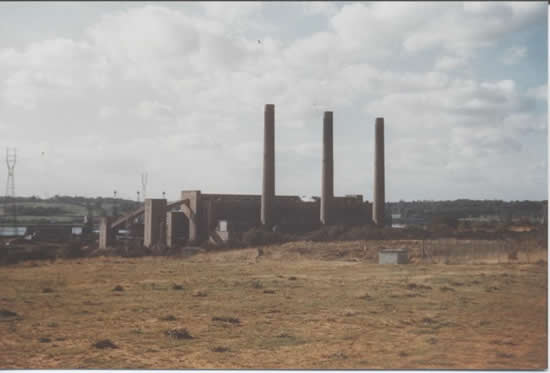
Site of Volvo Concessionaires, Raeburn Road , looking up the Orwell
River, Ipswich.
Power station has now been demolished.
|
|
Work to improve the site was always going on. Lecture rooms
were built on the back of the upper storey and dealers sent their
mechanics for training courses on Volvo servicing and overhaul.
The lower floor was cleared and the inner wall sealed in an attempt
to prevent water seeping through from the hill above. Stores
offices were built, and the Parts Department moved down below
and as they did so the check line and rectification gradually
extended along the top of the building.
Brooklands Motors sold Volvos in Ipswich but they had no
servicing department and it was decided to set up a service
and repair section at Reaburn Road. The Senior Check Line Mechanic
took charge but for reasons I can longer remember he fell out
with the management and moved to the Volvo Agent in Colchester
and I took over. At first we dealt with servicing and problems
from our own area, but we built up a good reputation and were
soon getting problem cars from far and wide.
Probably the most puzzling car we had was a 140, which insisted
on under-performing despite passing every test that we and
the dealer could devise. In desperation we decided to change
the engine but when we removed the exhaust manifold the trouble
was obvious. A fault in the coring when the manifold was cast
had almost blocked one branch.
|
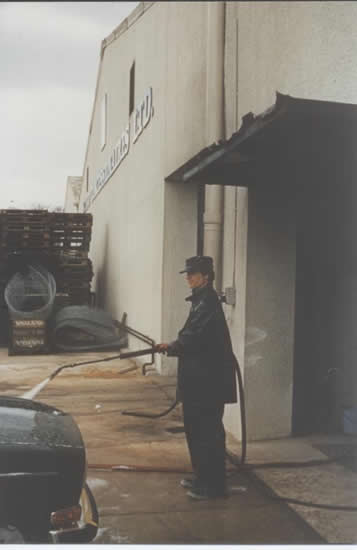
Steam Cleaning. Upper storey of works was shared with ‘Stores’ at
this time – Note pallets rear of picture.
|
Egertons closed in or about
1970 and many of the staff joined Volvo Concessionaires.
One of the Receptionists came and helped me with the servicing
section. By this time the top of the hill had been covered
with tarmac. Colemans had taken over car delivery and collections – mostly
by car transporters – and sales were going up and
up. To cope with this, pre-delivery checks were passed
on to the dealers, and the whole of the top layer of Raeburn
Road was used for cleaning and checking the cars for paint
faults and damage, and rectification thereof.
Meanwhile bulldozers enlarged the upper level and an
imposing Office Block was built. This eventually housed
the Training School, Customer Relations and Warranty
Department, Publications, Canteen and the offices of
various Heads of Department.
The next major upheaval came when the Parts Department
moved to Crick, leaving the lower floor at Reaburn Road
empty apart from a supply of current model parts to service
the check line. Before long this contained a well-equipped
Customer Servicing Section, Unit Overhaul Section, Warranty
Claims Investigation Department, and our first proper
canteen run by an independent caterer and provided cheap
and palatable lunches.
I was now normally in charge of customer servicing and
on the monthly staff payroll. We really bent over backwards
to keep our customers happy – collecting and delivering
cars from town and country and taking commuters to Ipswich
Station after they had brought their cars for servicing
and listening to the rattles etc. on the way. I also
road-tested cars after they had been through our workshops.
Up above us the cars were coming in thick and fast – steam
cleaning was no longer needed as Volvos were using lighter
wax which was removed in the ordinary car wash machines – there
were two of them side by side, leading to three hoists
for lower body and underside inspection and a brilliantly
illuminated bodywork inspection area. There was still
a small mechanical rectification centre, for faults to
drastic to pass to the dealer but ‘clear’ cars
went straight out of the building where a ‘jockey’ would
drive them to the dispersal area up the hill. This parking
area had been at least doubled by the purchase (?/leasing)
of another section of the hillside, and a separate enclosure
was made for employees cars. There was a large corrugated
iron shed for two wheels, which included my moped.
Cars with paint or body faults went into a big area
rather like a car park to wait for panel beaters or polishers
to be available to deal with them. Dirt in the paint
would sometimes be polished out and a ‘ding man’ might
tap out a dent without the need of paintwork, but usually
it was a case of reshaping, filling and passing a car
to the spray bay whence it was slowly pulled by a hook
on an endless belt through the long low bake oven and
out to final inspection before parking for dispatch. |
|
Somewhere around 1970 the
General Manager relinquished overall control to a workshop
Manager and a Quality Control Manager, while he became
the Chief Inspector.
By this time there were no more 120’s or 1800
Coupe’s coming through. I remember having a lot
of trouble with an 1800ES's bodywork, mostly with the
fit and water tightness of the doors and tailgate. 164’s
arrived in 1969.
I fell foul of the law twice while testing cars. The
first instance involved a 142, which was getting water
in the rear foot wells or boot. I suspected a leak in
the floor or wheel arch and went out on a wet day, looking
for puddles. I spotted a beauty close to the pavement
and swerved left to get a good splash. Too late I realised
that a Policeman was standing on the pavement. I took
my time about the test but he was there when I got back – all
muddy splashes and with up raised arm. He gave me a lecture
about his uniform being taxpayer's property to be treated
with respect, but accepted my apology. I never found
where the water entered the car. On the second occasion
I was testing for a slight vibration on a deserted town
road when out popped a 'Copper' who told me that I was
doing 43mph, I was fined £13.
I wish I had kept a diary, but I think it was in 1970
that a couple of avid unionists joined the workshops
and they soon began to recruit Members to the TGWU. The
Management tried to keep us non-unionised but then Lex
ran into financial trouble and ordered a 20% reduction
in personnel countrywide. Volvo Concessionaires’ answer
was to close the Servicing Section and most of my mechanics
were sacked, and those left suddenly realised they needed
a union to fight for their rights. The local Co-op took
over the Volvo Agency and I was told I could have a job
with them or become a Paint Inspector. I chose the later.
I believe it was in 1973 that Volvo was the only profitable
branch of Lex and we were putting through 100 cars a
day.
|
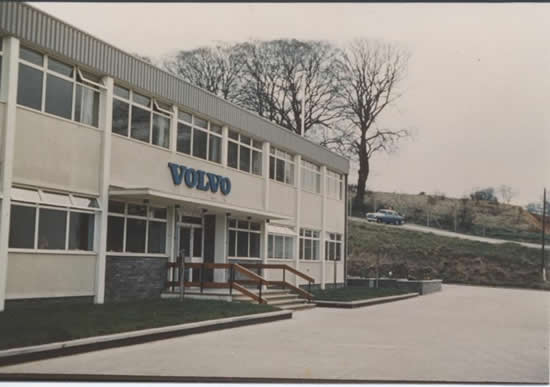
The Office Block competed |
|
Volvos were selling well in Britain and we were being asked
to speed up our throughput and do more overtime. The Union asked
the Management for a Bonus Scheme to which they agreed, only
after the Workshop Staff staged a ‘walk-out’. I can’t
recall the details of the scheme but I do know that by the time
we were checking 200 cars a day the bonus was doubling my pay.
Everybody was rushing madly about – Tea Breaks were taken
on the job and quality control had been stepped up to ensure
we were not missing anything in the rush.
I’ve often wondered why we found so much body and paintwork
to do on the Volvos. At one time there was trouble with Dockers
walking on the closely parked cars and accidents will occur
but I think we must have set a higher standard for paintwork
than our Swedish friends. As an ‘In’ Inspector
I worked on one of the three lines fed with washed cars from
the two Washing Machines. First a Paint Checker would locate
and faults in the finish of the cars and ‘spot’ them,
then on the clipboard picture. I would then 'Code Mark' them
with the Section (if any) to which the car should go for rectification. ‘Out’ Inspectors
would examine the output from the Bodyshop or Paintshop.
|
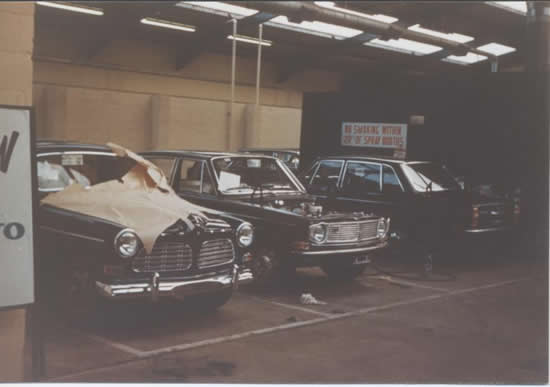
Cars waiting to go in Spray Oven – Late 60’s
|
An innovation in mid 70’s
was the Minor Body Repair Section, which was so busy that
a separate shop was set up on a local industrial estate
some miles from Raeburn Road. This held about 12 cars and
had its own paint oven.
In 1975 Volvo took over DAF Cars and I bought a DAF
46 from a consignment that had been standing on Harwich
Docks for a year. It cost me £1,125.00 – and
was my first new car I had ever owned. I wasn’t
too happy about the single belt drive but it was so cheap
and my old Jowett Javelin was desperately in need of
a rebuild. The DAF served me well for my last four years
of Volvos and was so light on fuel that I gave up my
Moped.
When the 340’s started coming from the DAF Factory,
they had so many faults that the first consignment was
sent back! The paintwork was awful and water came in
the body all over the place when we put them in the wash.
I had the job sitting inside the cars as they went through
the wash with a large lantern and a clipboard noting
where water came in. One of the worst faults was a complete
lack of sealing off the joint between the bulkhead and
the inner front wings, resulting in a steady trickle
of water on the front feet. There was obviously a feedback
to the makers as the build quality improved and my water
watch ceased. The 240-360 Series arrived in 1975. I’m
afraid I did not like the big fat shock absorbing bumpers.
Lex was a really good firm to work for. Just before
I retired they started a non-contributory pension scheme
based on years of service, which I part converted to
a lump sum, which purchased a 345 for my old age, 25%
off basic price. |
|
Nothing else altered much until I retired in 1979, after
the happiest thirteen years of my working life. I never lost
touch with Volvo Conncessionaires. They helped me with several
problems, which occurred on my 345. Alex Price, the Managing
Director of Volvo Concessionaires retired at the same time as
I, and he became an Area Supervisor of Lex Pensions who not only
paid the Pensioners but also took an active interest in their
welfare. I became a Pensioner’s Visitor and made regular
calls on 20 Pensioners in the Ipswich Area as well as calling
on folk as far away as the North Norfolk Coast. The faithful
345 served me well for 10 years when I passed it on to my daughter,
who upped the mileage to 93,000.
Volvos and Ipswich parted company in 1993 when Lex lost the
importing contract but not before I bought my ‘F’ Reg.
340 1.7 GLE from them, which should keep my 30 years relationship
with Volvos going until I can drive no more.
Rex Emmerson
|
Reproduced
from Issue 33 Spring 1998 & Issue 34 Summer 1998 of
The Volvo Enthusiasts Club Magazine |
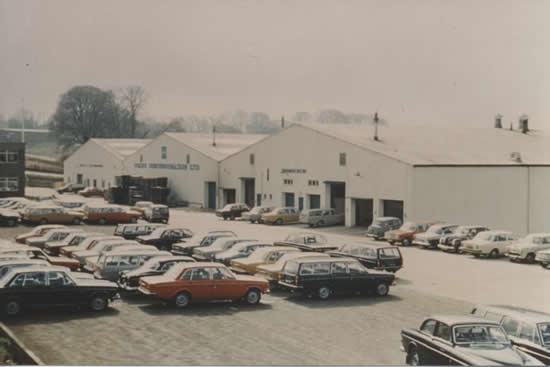
General view of Upper Storey
|
|
|
| |
|


